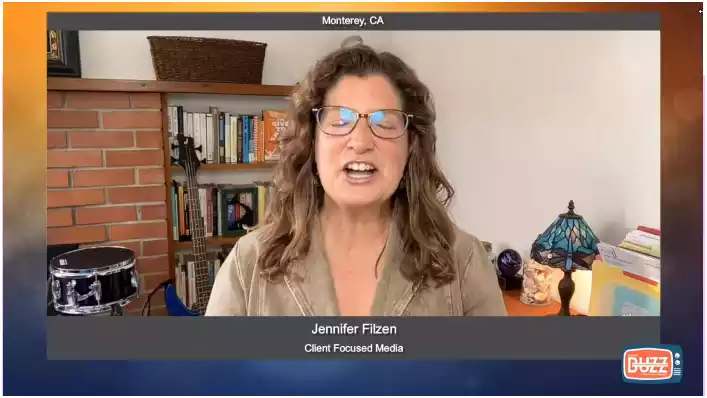Reducing Errors in Prior Authorization for Better Efficiency and Patient Care
Discover effective strategies to reducing errors in prior authorization for better efficiency, improving efficiency and enhancing patient care. Read more to learn how streamlined processes can benefit both healthcare providers and patients.

Understanding how long does prior authorization take for medication has become increasingly important for ensuring timely treatment. Many healthcare providers are streamlining this process, allowing patients to receive the medications they need without unnecessary delays.
Let’s explore how these advancements are changing the healthcare landscape!
Table of Contents
Reducing Errors in Prior Authorization for Better Efficiency
 Prior authorization (PA) plays a role in the healthcare system by ensuring patients receive the treatments while keeping costs in check. Despite its intentions, the PA process can be prone to errors that may cause delays in patient care, increase workload, and raise healthcare expenses. Overcoming these challenges requires an effort from parties such as healthcare professionals, insurance companies, and regulatory bodies. This article explores strategies to minimize errors in authorization to improve efficiency, precision, and patient outcomes.
Prior authorization (PA) plays a role in the healthcare system by ensuring patients receive the treatments while keeping costs in check. Despite its intentions, the PA process can be prone to errors that may cause delays in patient care, increase workload, and raise healthcare expenses. Overcoming these challenges requires an effort from parties such as healthcare professionals, insurance companies, and regulatory bodies. This article explores strategies to minimize errors in authorization to improve efficiency, precision, and patient outcomes.
Understanding the Prior Authorization Process
Before discussing ways to reduce errors, it is essential to understand how the prior authorization process works. PA typically consists of stages:
- Submission: The healthcare provider sends a request for authorization to the insurer along with justifications.
- Review: The insurer assesses the request, often consulting guidelines and experts.
- Decision: The insurer. Approves, denies, or requests information.
- Notification: Both the provider and patient are notified of the decision.
- Appeal (if needed): The provider can appeal against the decision in denial.
Each step risks mistakes resulting from documentation, miscommunication, or a lack of understanding of guidelines.
Common Mistakes and Their Consequences
In the PA process, mistakes can generally be grouped into three categories: errors in documentation, communication breakdowns, and misinterpretation of guidelines.
- Documentation Errors: The primary source of errors often stems from inaccurate submissions. When medical records are missing, patient details need to be corrected, or clinical justifications need to be better explained, it can cause delays in the review process. These mistakes lead to work and can result in denials and disruptions in patient care.
- Communication Errors: Effective communication between healthcare providers and insurers is crucial. Misunderstandings or a lack of clarity regarding requirements can lead to submissions and unnecessary delays. For example, if a provider is unaware of the documentation needed for treatments, they may submit incomplete information, resulting in errors.
- Guideline Interpretation Errors: Insurers frequently rely on guidelines when making authorization decisions. Healthcare providers who need to be more accurate or fully grasp these guidelines can lead to submissions. Differences in how insurers interpret these guidelines can also contribute to mistakes and inconsistencies.
Strategies for Reducing Documentation Errors
- Standardization of Forms: Implementing standardized forms for PA requests can significantly reduce documentation errors. Standardized forms ensure that all necessary information is included and presented uniformly. This helps both the provider and the insurer by streamlining the submission and review process.
Comprehensive Training: Training healthcare providers and administrative staff on PA requirements and documentation standards is crucial. Regular training sessions can help keep the staff updated on any changes in PA guidelines, ensuring accurate and complete submissions.
Using technology effectively: Leveraging technology platforms for communication between providers and insurers can enhance clarity and minimize errors. Online portals where providers can submit authorization (PA) requests, track their progress, and communicate with insurers can streamline the process. Real-time updates and notifications can keep providers informed about any requirements or changes.
- Establishing feedback mechanisms: Setting up a feedback loop where insurers offer input on submitted PA requests can help providers enhance their documentation and submission processes. Regular meetings or reports highlighting mistakes and best practices can improve understanding and reduce misunderstandings.
Strategies for Reducing Communication Errors
- Clear Guidelines and Checklists: Providing clear and detailed guidelines for PA submissions can mitigate communication errors. Insurers should create comprehensive checklists that outline necessary documentation, common pitfalls, and specific requirements for different treatments or medications. These checklists can be shared with healthcare providers to ensure clarity.
- Effective Use of Technology: Utilizing technology platforms for communication between providers and insurers can enhance clarity and reduce errors. Online portals where providers can submit PA requests, track their status, and communicate with insurers can streamline the entire process. Real-time updates and notifications can keep providers informed about any additional requirements or changes.
- Regular Feedback Mechanisms: Establishing a feedback loop where insurers provide constructive feedback on submitted PA requests can help providers improve their documentation and submission processes. Periodic meetings or reports outlining common errors and best practices can enhance mutual understanding and reduce miscommunications.
- Designated Points of Contact: Assigning designated points of contact within both insurance companies and healthcare providers can ensure consistency and clarity in communication. Having specific staff members responsible for handling PA requests can build expertise and foster better communication channels.
Ways to Minimize Errors in Understanding Guidelines

- Collaborative Creation of Guidelines: When healthcare professionals are involved in developing activity (PA) guidelines, it can result in practical and easily understandable criteria. Working together ensures that guidelines are feasible and straightforward and take into account the viewpoints of both insurers and providers.
- Ongoing Education: Educating healthcare providers on PA guidelines and their reasoning can enhance their comprehension and adherence. Regular workshops, webinars, and informative resources help keep providers up to date on changes. Recommended practices.
- Uniform Application of Guidelines: Insurers should aim to interpret and implement PA guidelines. Inconsistent decision-making can lead to frustration and errors. Establishing protocols and providing training for insurer reviewers can foster consistency.
- Use of Case Studies and Scenarios: Offering case studies and real-life scenarios that demonstrate guideline interpretation can be advantageous. These examples act as references for healthcare providers when preparing their PA submissions.
I'm very thankful for Portiva who I know is looking after my practice while I'm gone the virtual assistants can manage prescription refills, documents they can triage patients and just kind of answer administrative questions and they can handle a lot on their own. But also, they're very good about contacting me if there's any emergency or anything I need to attend to. So I'm very thankful for Portiva they can help almost any provider almost anywhere and it really allows for some good work-life balance as I'm getting to experience right now at my family farm so I'm very thankful for Portiva and I'm very happy to use their services"

Board Certified Family Medicine Physician

Portiva's Virtual Medical Assistant - I have all the support I need. There's somebody checking my email, any patient messages. Patients are still able to schedule and handle any scheduling issues and any kind of billing that needs to still go through. Portiva hands handles it all for me. I have support i have somebody that I can access 24/7 pretty much. It's all very seamless. If somebody has an emergency or needs a medication called in. I know that the va's at portiva will handle that for me.

Board Certified Family Medicine Physician

Other Factors to Consider

- Policy Regulatory Measures: Policymakers and regulatory bodies play a role in shaping the landscape of PA requirements. Standardizing requirements for PAs across insurers and states helps reduce variability and confusion. Additionally, regulations that require insurer responses help minimize delays.
- Stakeholder Engagement: Involving patients, healthcare providers, and insurance companies in conversations about enhancing the authorization (PA) process can bring insights and foster collaborative efforts. Patient advocacy groups can shed light on experiences and obstacles, while healthcare provider associations can provide insights from the perspective of professionals.
- Data analytics: Can be a tool for identifying trends and areas needing improvement in the PA process. Examining data related to PA submissions, denial rates, and common mistakes can offer insights. This data can help direct targeted interventions and evaluate the effectiveness of implemented strategies.
In conclusion
Improving the authorization process by reducing errors is an achievable objective. By addressing issues such as documentation accuracy, communication effectiveness, and interpretation errors through standardization training programs, technology integration, and stakeholder collaboration, efficiency and precision in PA processes can be enhanced. Ultimately, these initiatives can improve patient care quality, minimize burdens, and lower healthcare expenses. Striving towards a PA process demands dedication and adaptability from all parties involved: however, the benefits of improved healthcare outcomes make it a worthwhile pursuit.
To learn more about pre-approval that can enhance your medical practice. Discover more about Portiva and unlock a world of possibilities by visiting our homepage today!
- Promoting the use of prior authorization policies
- Must-haves for a successful preauthorization implementation
- Staying updated with prior authorization services
- Securing the future with precertification tech
- Implementing prior authorization security
- Mastering prior authorization compliance
- Educating patients on prior authorization
- Patient’s access to prior authorization
- Impact of prior authorization on healthcare
- Prior authorization and law
- Controlling outsourced precertification services
- Experiencing balance with preauthorization services
- How remote medical scribes influence preauthorization
- Navigating common pitfalls in preauthorization
- The importance of a speedy preauthorization process
- Essential provider training for efficient prior authorization
- Impact of recent prior authorization policy changes
- The effect of prior authorization on healthcare access
- Quality assurance in prior authorization for balancing timelines.
